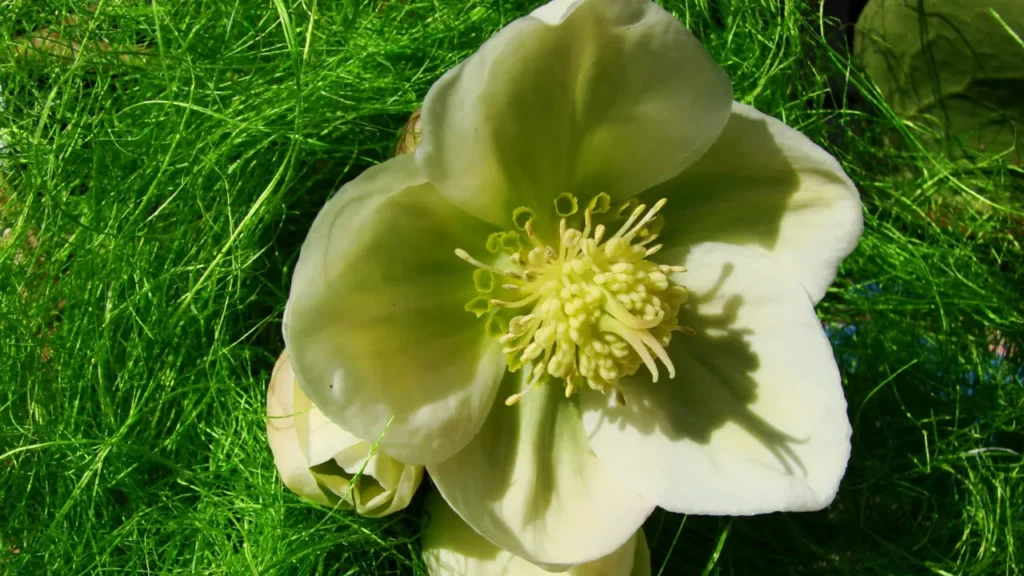The melanthiaceae family of plants includes the perennial white hellebore (veratrum album), which is native to Europe and Asia. Due to its many therapeutic benefits, this plant has been used in traditional medicine for generations. The scientific community has become interested in white hellebore despite its known toxicity because it still has strong potential health advantages. This article will provide an in-depth analysis of the nature, health advantages, recommended dosage, side effects, possible drug interactions, and safe use of white hellebore as a nutritional supplement.
You May Also Like:
Five Great Reasons to Try a Nootropic Mushroom Supplement
The Best Mushroom Supplements for Memory: 5 Top Brands Reviewed
White Hellebore: Benefits, Dosage, Side Effects, Drug Interactions, And Other Important Information is an original (NootropicsPlanet) article.
The Nature of White Hellebore
White hellebore is scientifically known as veratrum album, and it is a perennial herbaceous plant that prefers moist meadows and mountainous areas. It is a member of the melanthiaceae family and is distinguished by its tall stems, which can grow up to 2 meters tall. Its broad leaves are grouped in a spiral pattern around the stem, and dense, terminal panicles of greenish-white flowers blossom from it. From June through August, the plant blooms, and its fruits are tiny, dry capsules with lots of seeds within them.
Health Benefits of White Hellebore
A number of diseases have been traditionally treated using white hellebore. It can have several health advantages, such as:
Effects of Antihypertensives
Protoveratrine A and B, which are present in white hellebore, are known to have powerful vasodilatory effects. These alkaloids cause blood vessels’ smooth muscles to relax, lowering blood pressure. Recent research has indicated that white hellebore extracts can be a good alternative to synthetic anti-hypertensive medications in the treatment of hypertension.
Anti-Cancer Features
The hedgehog signaling system, which is important in the control of cell development and differentiation, has been discovered to be inhibited by the alkaloids found in white hellebore, particularly jervine and cyclopamine. Inhibition of this system by white hellebore alkaloids has demonstrated promising anti-cancer effects in pre-clinical studies. Disruption of this route has been linked to several types of cancer.
Microbiological Activity
For centuries, white hellebore has been used for its antibacterial properties. Saponins, steroidal alkaloids, and phenolic compounds have been shown to be present in the plant, according to recent studies. These substances can help prove the plant’s antibacterial effectiveness against a variety of diseases, including bacteria, fungi, and protozoa.

Chemistry of White Hellebore
A wide variety of bio-active substances found in white hellebore contribute to its pharmacological chemistry. Alkaloids are the main components that provide it both medicinal and harmful effects. The following are some of the most notable alkaloids present in white hellebore:
The steroidal alkaloids, protoveratrine A and B, are principally in charge of white hellebore’s vasodilatory and anti-hypertensive properties. They work by attaching to smooth muscle receptors, which relaxes the muscle and lowers vascular resistance.
The group of steroidal cevanine-type alkaloids includes jervine, veratramine, and germerine. They display a variety of pharmacological abilities, such as anti-inflammatory and anti-cancer effects. It has been discovered that Jervine, in particular, inhibits the hedgehog signaling pathway, which is what is essential for cell development and differentiation.
Saponins: A variety of saponins, which are glycosides with a peculiar foaming property, are present in white hellebore. Saponins have been linked to the plant’s antibacterial properties as well as its anti-inflammatory and noninflammatory properties.
Phenolic Compounds: The antioxidant and anti-inflammatory effects of white hellebore are also a result of the presence of phenolic compounds, including flavonoids and phenolic acids.
These bio-active substances in white hellebore interact with a number of physiological systems, such as the cardiovascular system, gastrointestinal tract, and central nervous system, to produce a variety of pharmacological effects.
Physiological Properties of White Hellebore
The many bio-active chemicals found in white hellebore are responsible for the plant’s wide range of pharmacological effects. The following is a description of some of these chemicals’ physiological effects:
Hypertension-Reducing Effects
The steroidal alkaloids contained in white hellebore, protoveratrine A and B, are principally accountable for this plant’s anti-hypertensive properties. They attach to smooth muscle receptors in the blood vessels, especially in the peripheral vasculature, where they have significant vasodilatory effects. This binding causes vasodilation, which in turn lowers peripheral vascular resistance and blood pressure. It also activates intracellular signaling pathways that support smooth muscle relaxation.
Immunotherapy Mechanism
The steroidal cevanine-type alkaloids, like jervine and veratramine, are primarily responsible for white hellebore’s anticancer effects. The hedgehog (HH) signaling system, a critical regulator of cell proliferation, differentiation, and tissue patterning, has been discovered to be inhibited by these alkaloids. Different forms of cancer have been linked to abnormal HH pathway activity. These alkaloids may inhibit the HH pathway and hence exert anticancer effects by promoting apoptosis and decreasing the development and multiplication of cancer cells.
Microbiological Effects
The saponins, steroidal alkaloids, and phenolic chemicals in white hellebore are chiefly responsible for the plant’s antibacterial properties. When saponins interact with the cell membranes of microorganisms, they alter the structure of the membranes and cause cell lysis. Numerous bacteria, fungi, and protozoa have been discovered to be inhibited by steroidal alkaloids like protoveratrine A and B, possibly by interfering with their cellular processes. The antioxidant properties of phenolic compounds, such as flavonoids and phenolic acids, which can harm pathogens’ cellular structures and reduce their virulence factors, can help them contribute to the antibacterial effects.
Immunomodulatory and Anti-inflammatory Mechanisms
Through the action of its saponins and phenolic chemicals, white hellebore demonstrates anti-inflammatory and immunomodulatory properties. The release of pro-inflammatory mediators like cytokines and chemokines as well as the activation of immune cells like macrophages and lymphocytes have both been discovered to be modulated by saponins. Inhibiting inflammatory mediator-producing enzymes like cyclooxygenase (COX) and lipoxygenase (LOX) as well as scavenging reactive oxygen species (ROS) that cause inflammation and tissue damage are two ways that phenolic compounds, such as flavonoids and phenolic acids, can reduce inflammation.

Optimal Dosage of White Hellebore
Considering white hellebore’s known toxicity, figuring out the ideal dosage for its therapeutic uses is essential. Clinical trials have used a range of doses depending on the particular health issue being treated, despite the fact that there is no substantial dosage advice. To develop a safe and efficient dose regimen, it is imperative to speak with a healthcare practitioner before beginning white hellebore supplementation.
Side Effects of White Hellebore
Due to its poisonous alkaloids, white hellebore is known to have a variety of negative side effects. The following are some of the most typical side effects:
GI Symptoms: Common gastrointestinal side effects of consuming white hellebore include nausea, vomiting, diarrhea, and abdominal discomfort.
Cardiovascular Symptoms: White hellebore alkaloids can cause bradycardia, hypotension, and arrhythmias, among other cardiovascular symptoms.
Neurological Symptoms: Some cases of white Hellebore poisoning have been associated with seizures, headaches, dizziness, and headaches.

Potential Substance Interactions with White Hellebore
White hellebore can interact with a variety of drugs, potentially raising the risk of side effects or reducing its therapeutic benefits. Listed below are a few possible drug interactions:
Drugs to Lower Blood Pressure
White hellebore has anti-hypertensive effects, hence taking it with other anti-hypertensive drugs can have additive or synergistic effects that could cause excessive blood pressure lowering. Before using white hellebore, if you are on any anti-hypertensive drugs, you should speak with a healthcare provider.
Depressants for the Central Nervous System (CNS)
The effects of CNS depressants, such as benzodiazepines, barbiturates, and opioids, may be heightened by white hellebore, which can result in enhanced sedation, respiratory depression, or other negative effects. When using white hellebore with CNS depressants, caution is advised.
Anti-platelet and Anticoagulant Medications
White hellebore can contain anticoagulant and anti-platelet effects, according to research. The risk of bleeding issues can rise when anticoagulant or anti-platelet medications, like aspirin or warfarin, are taken concurrently. Before using white hellebore, if you are using these drugs, you should speak with a healthcare provider before taking white hellebore.
Interactions Between Cytochrome P450 (CYP) Enzymes
Alkaloids from white hellebore may interact with the CYP enzyme system, which is in charge of the metabolism of several medications. The pharmacokinetics of drugs metabolized by CYP enzymes may be affected by this interaction, which can result in either an increase or decrease in drug concentrations in the body. When taking white hellebore along with drugs that are processed by CYP enzymes, caution should be taken.
Responsible Usage of White Hellebore
Responsible use of white hellebore as a nutritional supplement is crucial given the potential health benefits, negative effects, and drug interactions. The following are important suggestions for appropriate use:
• Before beginning white hellebore supplementation, speak with a healthcare expert to develop a safe and effective dosage regimen.
• Keep an eye out for any side effects and notify a medical practitioner of any uncomfortable symptoms.
• Use caution when using white hellebore with drugs or dietary supplements, especially if there are known interactions.
• Use a standardized, high-quality white hellebore extract to reduce the possibility of contamination or adulteration.
White Hellebore:
Conclusion
As previously mentioned, white hellebore is known for being toxic more than it is known for being benefical to overall health and wellness. Before taking a white hellebore supplement, it is important to keep that in mind, as well as all other standard cautionary suggestions. Always speak to your primary care provider before starting a new supplement.

References:
- Antihypertensive Effects of Veratrum Alkaloids. British Journal of Pharmacology and Chemotherapy. Retrieved from: https://bpspubs.onlinelibrary.wiley.com/doi/abs/10.1111/j.1476-5381.1952.tb00730.x
- Inhibition of the Hedgehog Pathway by Steroidal Alkaloids. Journal of Natural Products. Retrieved from: https://pubs.acs.org/doi/abs/10.1021/np50099a002
- Antimicrobial Activity of Veratrum album L. Alkaloids. Journal of Applied Microbiology. Retrieved from: https://sfamjournals.onlinelibrary.wiley.com/doi/abs/10.1046/j.1472-765x.2002.01222.x
- Pharmacological Properties of the Alkaloids from Veratrum Species: A Comprehensive Review. Planta Medica. Retrieved from: https://www.thieme-connect.com/products/ejournals/abstract/10.1055/s-0043-122080
Important Note: The information contained in this article is for general informational purposes only, and should not be construed as health or medical advice, nor is it intended to diagnose, prevent, treat, or cure any disease or health condition. Before embarking on any diet, fitness regimen, or program of nutritional supplementation, it is advisable to consult your healthcare professional in order to determine its safety and probable efficacy in terms of your individual state of health.
Regarding Nutritional Supplements Or Other Non-Prescription Health Products: If any nutritional supplements or other non-prescription health products are mentioned in the foregoing article, any claims or statements made about them have not been evaluated by the U.S. Food and Drug Administration, and such nutritional supplements or other health products are not intended to diagnose, treat, cure, or prevent any disease.


